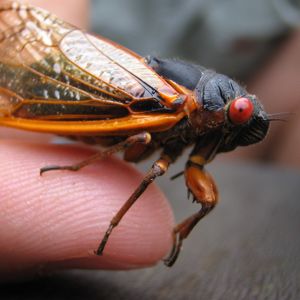
It was the same one Dan tried to cast to a few stories earlier when he had no flies on the end of his line.Īpparently, Steve had the best day of trout fishing in his life. They can be troublesome, but not like the other. He landed and released the best trout of the season so far. These cicada nymphs emerge from their ground habitat in June-August after completing a life cycle of 1-5 years. It would have to say it was a stellar day. Yes Steve missed and lost quite a few but he managed to land 28 trout of both flavours and we were off the water by three PM. It is a big fly with a big hook that needs to be properly set into the jaw of a trout. My Dad never did get it but he still managed to hook a few. Nobody gets it right away and I am still guilty of precocious striking to this day. Then were were some variations according to how the fly was taken.

I explained that In slow water with a gentle sip, count at least to three before striking. We floated along and I pointed out some spots he might like to chuck a cheeseburger-sized dry fly to. Steve had never caught a trout on a dry fly. Cicadas were singing loudly from early morning so I tied on a deer hair cicada for him. I took him in the canoe down the Rangitaiki River from the Mangamako Stream. The sea was rough on this fateful day so I managed to get a fly rod back in his hands. But he just did some nymphing and the last time out was after the big flood of 2017. I had dragged him out a couple of times since knowing him in the last decade. Being a very keen deer stalker and game fisherman, he has sort of left trout fishing behind in the last couple of decades. As a young man he did a lot of trout fishing and caught a lot of fish. He does it all and provides very well for all around him. Help protect your home throughout the year with seasonal pest control solutions.Stephen Meharry is a hunter-gatherer and fisherman. By doing so you will be prepared for huge numbers of swarming, noisy and periodical cicadas that show up for their scheduled arrival. If you are interested in knowing when the next brood of periodical cicadas is schedule to show up, check out your State’s University Extension Service since they can provide a cicada “forecast” for your area and state.

The 17-year cicada broods are designated as broods I through XVII, while the 13-year cicada broods are designated as XVIII through XXX. Populations of periodical cicadas called broods show up in the same areas as their parents who preceded them by 13 or 17 years and cicada experts assign a specific Roman numeral to each brood in order to track and predict their expected emergence. There is some variation since not all members of a population are at the same stage of nymph development and may emerge either ahead or behind their 13 or 17 year schedule – a phenomenon called straggling. In general, cicadas follow their respective nymph emergent 13 or 17 year time frames. Periodical cicadas: No periodical cicadas in the United States, India, or Fiji are expected to emerge in 2023. These cicadas emerge from the ground after completing life cycles that are 13 or 17 years. They can be troublesome, but not like the other genus of North American cicadas – Magicicada – the periodical cicadas. These cicada nymphs emerge from their ground habitat in June-August after completing a life cycle of 1-5 years. Most species of cicadas in North America are classified in the genus Neotibicen and are commonly called the annual cicada, jar fly or dog-day cicada. Here the adult cicada emerges, leaving behind the nymphal shell, mating and producing fertile eggs that begin the next generation of cicadas. When the long, underground nymphal stage is complete, mature nymphs burrow upwards to the soil surface and crawl up a tree trunk or some vertical object. The eggs laid by the female cicada begin hatching about six weeks after they are laid and the nymphs drop to the soil surface and burrow underground where they spend almost all of the time it takes to complete their nymphal development. Mature male and female adults mate and the female lays her fertilized eggs in slits she cuts in twigs and branches of trees and shrubs. The cicada’s life cycle is one of incomplete metamorphosis, meaning the insect goes through three developmental stages: To better understand why the appearance of cicadas varies, we need to look at their typical life cycle. The difference relates to when groups of cicada nymphs come out of their developmental habitat in the ground and soon after emergence become flying, mature adult cicadas. If you live in Kentucky, the answer to our question is different than if you live in Pennsylvania.

The answer to this question is dependent upon location and the respective species of cicadas that are found there.


 0 kommentar(er)
0 kommentar(er)
